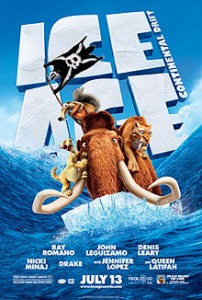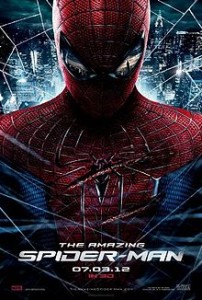Amy Bell reviews – the recent Women in Black and the John Wayne classic The Desert Trail.

The beginning of the film is innocent, focusing on three little girls, playing in their bedroom. The Woman in Black appears in the room. The little girls take one look at her and stop their activities, slowly walk towards the window and jump. The scream of a woman can be heard.
The Woman in Black is a drama/thriller/horror capturing the terrifying story of a ghostly woman who is trying to find her dead son. Her curse laces the remote village of Cryphin Gifford. Each time she appears, a child dies causing unimaginable distress to the people of the village.

Arthur Kipps who is played by Daniel Radcliffe is a lawyer who is sent to Eel Marsh House to sort through the late Mrs. Drablow’s documents. Unbeknown to Kipps, Mrs. Drablow is the sister of the Woman in Black. He discovers that Mrs Drablow took her son away from her and now she wants revenge. The Woman in Black haunts Eel Marsh House, putting Kipps in an extremely horrifying situation.
The people of the nearby village of Cryphin Gifford refuse to tell Kipps the truth and try to persuade him to leave, but Kipps is adamant to stay and finish his job.
Kipps’ son is on his way to see him. Completely oblivious to what might happen, Kipps believes that after helping reunite the Woman in Black with her son, she will leave him and his son alone. However, It is not in the Woman in Black’s nature to let a child survive. She makes the little boy walk onto a train track, right in the path of a train. Kipps spots him and jumps onto the train track resulting in instant death to both of them.

It could be argued that the ending is unhappy, however Kipps and his son are reunited with his dead wife. They walk hand in hand together along the ghostly train track.
The Woman in Black is a spine chilling ghost story, originally a novel by Susan Hill. It is frightening audiences all over the country. I remember an audience member saying: ‘that was the scariest film I have ever seen!’ The music and creepy effects make this movie into one of the most popular and terrifying horror movies of all time.

The Desert Trail is a Western starring one of the most famous Western actors of the Classical Hollywood era, John Wayne. Marion Mitchell Morrison was born in 1907, later known as John Wayne. He is an Academy-Award winning actor and had an extremely successful career. He appeared in nearly 250 movies, some of which include, The Three Musketeers (1933), The Lucky Texan (1934), Stagecoach (1939), Fort Apache (1948) and True Grit (1969). Wayne is very masculine and has true charm, which means that he is popular with the ladies.
The Desert Trail is a fifty-seven minute long film about two men named John Scott (John Wayne) and Kansas Charlie (Eddy Chandler). The men are minding their own business and having some good old banter about women, when they are accused of a murder that they did not commit. A cowboy named Pete and his unwilling underling Jim demand money from the Paymaster of Rattlesnake Gulch Rodeo. When the Paymaster does not cooperate, Pete shoots him. The locals and the Sheriff hear a gunshot and rush to see what has happened. Trying to cover himself, Pete accuses John Scott and Kansas Charlie of killing the Paymaster. Scott and Charlie are now trying to escape from a crime they didn’t even commit.
Scott and Charlie head to Poker City, trying to hunt down Pete and clear their names. In order to do this they change their names. Scott becomes John Jones and Charlie becomes Rev. Harry Smith. Meanwhile, Jim is a good man and is trying to get away from Pete, but when Pete blackmails him, he is forced to rob a stagecoach.
Scott becomes smitten with Jim’s sister Anne and tries to woo her into falling for him. Scott and Charlie’s plan fails and they are accused of the murder and find themselves locked up in Jail. Lucky for them, Jim helps them escape. They then set out to find Pete, who is on the run. Pete tries to persade Jim to Rob a bank, but when Jim refuses, he shoots him. On his deathbed, Jim reveals the truth. The film concludes with a happy ending when Pete is arrested and Scott unofficially gets married to Anne, sharing a passionate kiss.
What makes this film so exciting is the long equestrian chases, it makes the audience wonder w hat is going to happen next and if or when they are going to catch the villain. The acting and dialogue is very clever, with catchy one liners, such as: “You say good morning and they think you want to get hitched.” (Kansas Charlie). This film is very male orientated, as the men are trying to portray themselves as strong and masculine to win the heart of a good woman. The women are innocent and independent, making the men really work for their hand in marriage.
hat is going to happen next and if or when they are going to catch the villain. The acting and dialogue is very clever, with catchy one liners, such as: “You say good morning and they think you want to get hitched.” (Kansas Charlie). This film is very male orientated, as the men are trying to portray themselves as strong and masculine to win the heart of a good woman. The women are innocent and independent, making the men really work for their hand in marriage.
The punching scenes are very unrealistic, but in the Classical Hollywood era, filmmakers did not have the use of the astonishing effects that are used in film today.
What is so interesting about Classical Hollywood films are that the credits are most often at the beginning of the film, rather than the end. There was nowhere near as many people involved with films in the early film era than there is today, so they could put all the credits at the beginning of the film, so that the audience would know who was involved with the film right away. This was changed in the late 1970s when George Lucas directed Star Wars (1977). He refused to put the credits at the beginning. He wanted them at the end, so that it was less distracting and the audience then had the option to either watch the credits or leave before they started.
This film is in black and white with very little effects. What it really shows is that you do not need to include any fancy effects to make a very good film.
 It is only when a young boy named Ted (Zac Efron, believe it or not) goes to visit his crush, Audrey (Taylor Swift) do things change. Audrey reveals to him that she wishes to see a real tree, after showing him a magnificent painting she has created against the wall of her house, and determined to impress her, Ted goes in search of a mysterious man named the ‘Once-ler’. The Once-ler is the one who cut down the trees in the first place, and as a result of that, he had managed to summon a strange (and very annoying) creature, known as the Lorax, who ‘speaks for the trees’. He had tried to stop the Once-ler from destroying the forests that had strived before Thneedville, but because of his greed and ambition to become a success with his “Thneeds” (an item of clothing made from the leaves of trees), the Once-ler ignored him…until there were no more trees left.
It is only when a young boy named Ted (Zac Efron, believe it or not) goes to visit his crush, Audrey (Taylor Swift) do things change. Audrey reveals to him that she wishes to see a real tree, after showing him a magnificent painting she has created against the wall of her house, and determined to impress her, Ted goes in search of a mysterious man named the ‘Once-ler’. The Once-ler is the one who cut down the trees in the first place, and as a result of that, he had managed to summon a strange (and very annoying) creature, known as the Lorax, who ‘speaks for the trees’. He had tried to stop the Once-ler from destroying the forests that had strived before Thneedville, but because of his greed and ambition to become a success with his “Thneeds” (an item of clothing made from the leaves of trees), the Once-ler ignored him…until there were no more trees left. Film and cinema was one of the greatest inventions of all time because it provided people with a brand new way of finding enjoyment. One of the first motion pictures to ever be released was The Horse In Motion, which was released in 1878. Eadweard Muybridge, who was a photographer, made this film. He took several photographs of the different movements of horses. He put all the photographs together to make it look as if the horse was actually moving. He set up a row of twelve cameras, each making an exposure in one-thousandth of a second. He later made a lantern to project moving images of horses.
Film and cinema was one of the greatest inventions of all time because it provided people with a brand new way of finding enjoyment. One of the first motion pictures to ever be released was The Horse In Motion, which was released in 1878. Eadweard Muybridge, who was a photographer, made this film. He took several photographs of the different movements of horses. He put all the photographs together to make it look as if the horse was actually moving. He set up a row of twelve cameras, each making an exposure in one-thousandth of a second. He later made a lantern to project moving images of horses.

 and the action unfolded during a continuous take.
and the action unfolded during a continuous take.



 hat is going to happen next and if or when they are going to catch the villain. The acting and dialogue is very clever, with catchy one liners, such as: “You say good morning and they think you want to get hitched.” (Kansas Charlie). This film is very male orientated, as the men are trying to portray themselves as strong and masculine to win the heart of a good woman. The women are innocent and independent, making the men really work for their hand in marriage.
hat is going to happen next and if or when they are going to catch the villain. The acting and dialogue is very clever, with catchy one liners, such as: “You say good morning and they think you want to get hitched.” (Kansas Charlie). This film is very male orientated, as the men are trying to portray themselves as strong and masculine to win the heart of a good woman. The women are innocent and independent, making the men really work for their hand in marriage.





